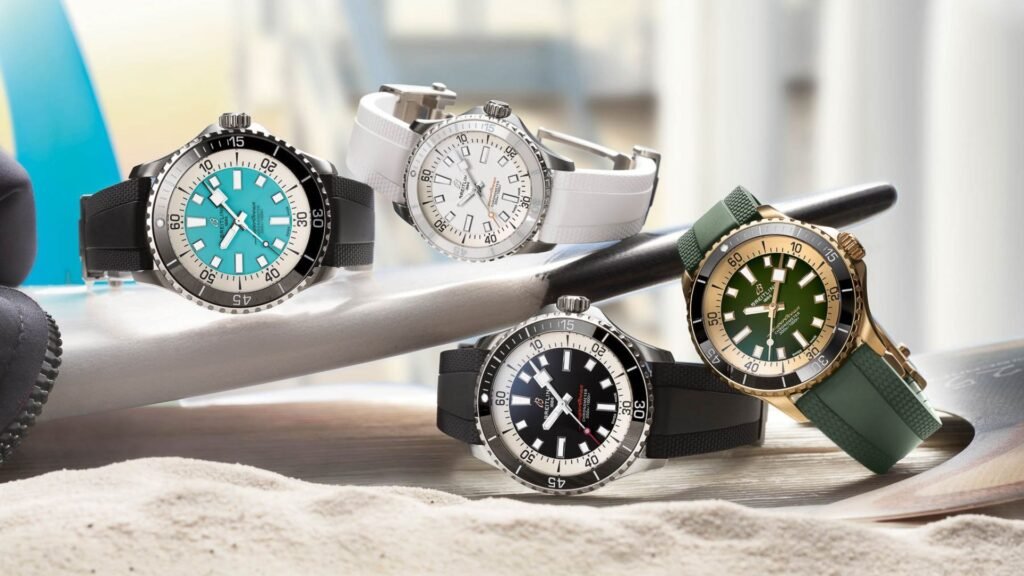When it comes to purchasing a watch, understanding how to evaluate watch quality is essential to ensure you get a timepiece that meets your expectations in terms of durability, accuracy, and craftsmanshipLet’s give you 15 practical tips to help you assess the quality of a watch before making your purchase.
Why Evaluating Watch Quality Matters
Evaluating watch quality allows you to make an informed decision and ensures that you invest in a timepiece that not only looks good but also stands the test of time in terms of reliability and functionality.

1. Check the Build Materials
Start by examining the materials used in the watch case, strap, and dial. High-quality watches often use materials like stainless steel, titanium, and sapphire crystal for the dial window, and genuine leather or high-grade rubber for the straps.
2. Examine the Finish
Inspect the finish of the watch closely. A well-crafted watch will have smooth edges, consistent colouring, and a polished or brushed finish depending on the design.
3. Assess the Movement Type
Determine whether the watch has a mechanical, automatic, or quartz movement. Mechanical movements are known for their craftsmanship, while quartz movements offer accuracy and low maintenance.
4. Test the Accuracy
For mechanical watches, check the accuracy by observing how well it keeps time over a period. Automatic and quartz watches should also maintain precise timekeeping.
5. Evaluate Water Resistance
If water resistance is important to you, verify the depth rating of the watch. Quality watches often indicate their water resistance level in ATMs (atmospheres) or meters.
6. Look at the Brand Reputation
Research the brand’s reputation for producing high-quality watches. Established brands with a history of watchmaking excellence often prioritize craftsmanship and reliability.
7. Check the Movement Complications
Evaluate any additional functions or complications the watch may have, such as chronographs, moon phases, or GMT functions. Ensure they operate smoothly and add value to your usage.
8. Consider the Crystal Type
Sapphire crystal is highly scratch-resistant and preferred for luxury watches. Mineral crystal is more affordable but may scratch more easily. Evaluate which suits your lifestyle.
9. Examine the Strap or Bracelet
Inspect the strap or bracelet for flexibility, comfort, and durability. High-quality straps are made from genuine leather, stainless steel, or ceramic, and bracelets have secure clasps.
10. Test the Crown and Pushers
Operate the crown (used for setting the time) and any pushers (for chronograph functions) to ensure they function smoothly and feel solid when adjusted.
11. Look for Luminosity
Check if the watch hands and markers have luminous material applied for visibility in low-light conditions. Quality luminous materials should glow brightly and last long.
12. Verify the Warranty
A reputable watch should come with a warranty that covers manufacturing defects. Understand the terms of the warranty and the service options available.
13. Assess the Weight and Feel
Quality watches often have a substantial feel without being excessively heavy. They should feel balanced on your wrist and comfortable to wear throughout the day.
14. Check for Consistent Branding
Look for consistent branding on the watch face, case back, and clasp. Quality watches pay attention to details like engraved logos and serial numbers for authenticity.
15. Read Customer Reviews
Lastly, read reviews from other watch enthusiasts or buyers to gather insights into their experiences with the watch’s quality, performance, and durability.
Conclusion
In conclusion, evaluating watch quality involves examining various aspects from materials and craftsmanship to functionality and brand reputation. By following these 15 tips, you can make a well-informed decision when selecting a watch that not only meets your aesthetic preferences but also delivers lasting quality and reliability.











